
Sephonie Review
Most 3D platforms make you look for platforms to jump to. Sephonie makes you look for walls.
April 14, 2022
Sephonie! It's a game made by the creators of Anodyne, Anodyne 2 and Even the Ocean! No time for an intro, let's jump right into it.
Summary
Sephonie is a 3D platform in which a group of 3 Taiwanese scientists get shipwrecked on a mysterious island, tasked with discovering and cataloging its unique organisms while finding out more about its inner workings as well as deepening their bonds.
Your movement kit is composed of 3 main moves: Wallrun, dash and sprint. You can combine them in interesting ways to explore the beautiful cave environments and find hidden collectibles – memories of the characters and sometimes bits of lore about the island.
Thanks to a device known as the ONYX, you can perform a mind link with the creatures you find by playing a minigame where you have to connect 3 or more squares of the same color in a grid. This grants you access to a small description of their role in the environment, as well as a peek into their minds.
Gameplay
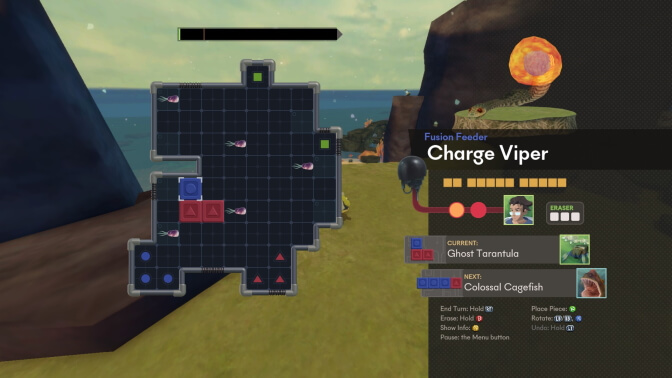
The game's puzzle UI.
To put it short, this is the best 3D platformer experience I have ever had so far. The controls are simple but deep enough to be expanded upon in a satisfying way throughout the whole game. No action defeats the purpose of another; for example, both sprinting and walking have their own pros and cons that make them function as two unique tools instead of the former being a better version of the latter.
Most 3D platforms have the immediate goal of making you look for, well, another platform to jump to. A clearly designed path distinct from the decorative part of the environment that you have to stay on at all times.
Sephonie makes you look for walls. Your entire movement kit is based around them: the wallrun is probably your most powerful movement tool (and it controls surprisingly well, considering how wallruns are usually implemented), it dictates how you move around in the caves. Your dash serves as a more satisfying version of a simple ledge grab, granting you some extra height when you bounce off a wall and thus serving as a finisher for all other moves.
And the level design gives you plenty of them! Cliffs, rock formations, large stalactites (stalagmites?), subterranean cliffs, plenty of surfaces to use to your advantage. By making your regular jump somewhat weak in comparison to other platformers, Sephonie opens the opportunity for exploration as well as level design that feels like a part of the world instead of just a level that's been designed.
Sephonie also places plenty of its collectibles in hard to reach spots, and even out of bounds. I really like their approach with the latter (the cubes in particular): instead of showing you a collectible somewhere and making you go out of bounds to get it, it gives you the opportunity to go first and then shows you the collectible as a reward for mastering the environment.
The one mechanic I had an issue with was "Reveal", one of the upgrades you get later on. It makes invisible platforms show up when you get close enough to them. It's practically used twice, once right after you get it and then again to progress to the next area. I wish the radius was bigger, or that there was a way to know when there were invisible platforms in your general area.
As much as I praise the wallrun, it isn't without issues either. I had a lot of difficulty hopping between walls parallel to each other; the game explicitly states a wallrun won't work if you throw yourself too parallel to a wall, but that's the angle you get when you hop to the next wall so you have to fiddle in the air and most of the time you just end up plummeting to your death.
There are also the puzzles, your way of interacting with the living organisms on Sephonie island. They're fun! I can't say I was "looking forward" to them, but it was always nice to get one at the end of a platforming challenge. The mechanics are expanded nicely, I never found them too difficult but they provide enough challenge to keep you entertained throughout their short duration.
Presentation
The levels are really pretty. The game has a somewhat low-poly style, but it makes up for it with very good use of color, shaders and effects. The environments feel very natural and very much alive. The music complements it very well too, calm and at times unsettling but deeply emotional.
The creature designs are stunning. They're realistic enough so that you can easily identify their real-life counterparts, but also bizarre and special and interesting in their own right. My only complaint is that some of them blend into the environment too well, which is great lore wise but makes finding some of them kind of a pain.
I can't put into words how pretty this game is, so here's some screenshots!
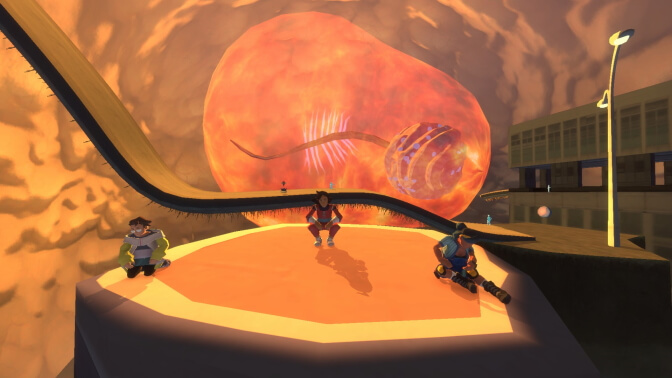

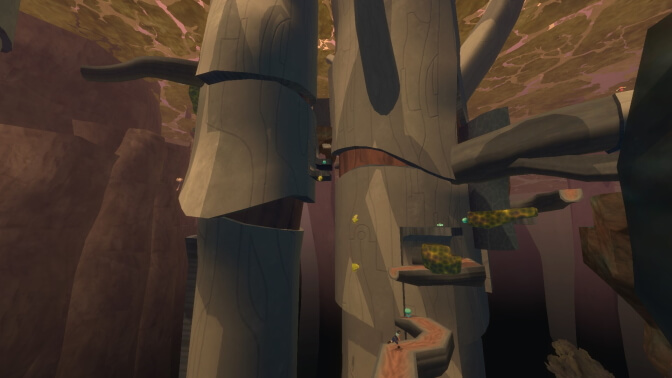
Lore
I'm separating this section in two parts: Sephonie Island and the main characters. Not because they are disconnected, though; the island ultimately serves as a stage (and even a character) in the characters' journey of self discovery.
Sephonie Island feels truly alive. By linking with the different organisms, you get short descriptions that tell you how they fit into the ecosystem and even a small bit of dialogue about how they feel about it. This makes the island feel intentional, like a place where life is actively working together to coexist and make a home for itself.
Every organism has a purpose they actively fulfill and not just a niche evolution randomly placed them in. This is better exemplified by the five Key Species: five beings that act as organs to the Island as a living thing and regulate its ecosystem with a surprising intent. The descriptions might not be 100% accurate – after all you're the first people to ever find these beings (or at least Link with them) – and the speech of the organisms might not even be real, but for a moment it's all full of intention.
The characters are all very well fleshed out and have their own traits and insecurities: Amy has worries about her job and future, Ing-Wen is unsure about her place in society and relationships, and Ryou has trouble balancing his work and marriage.
Like mentioned above, the island acts as a stage for these characters to develop, not by giving them answers, but instead opportunities for them to connect with their past as well as each other. I'd have liked for there to be more intimate interactions between the three protagonists, as they spend most of the game as coworkers instead of friends, but what little there is feels very authentic.
This game focuses heavily on Asian culture and society. I'm not Asian myself, and I haven't had many opportunities to interact with the culture or its people in person, so it's not really my place to judge if it's good or bad representation. However, I can say that, while all characters are at least part Taiwanese, there are major and minor differences to how they interpret their heritage that make for a compelling story even from an outsider point of view.
I'm not going in depth into the plotline itself, as I don't want to spoil things for people who would still like to experience the game for themselves, but I want to comment on the ending: for the love of God please play the epilogue right after finishing. And do it all the way through. The ending felt jarring and a bit unsatisfying at first, but the epilogue finished things off nicely.
I can see some people having issues with it still, but I personally thought it was a nice compromise between Anodyne 2's explicitly happy ending and Even The Ocean's pessimist take on climate change.
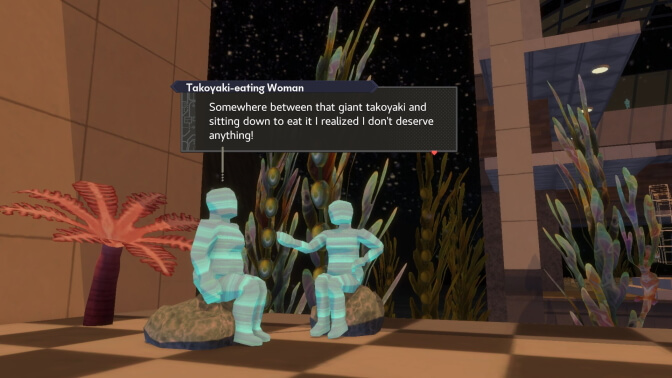
One of the game's cutscenes.
Conclusion
Go play it! Now! Seriously! There's a demo! Click here and go check it out!
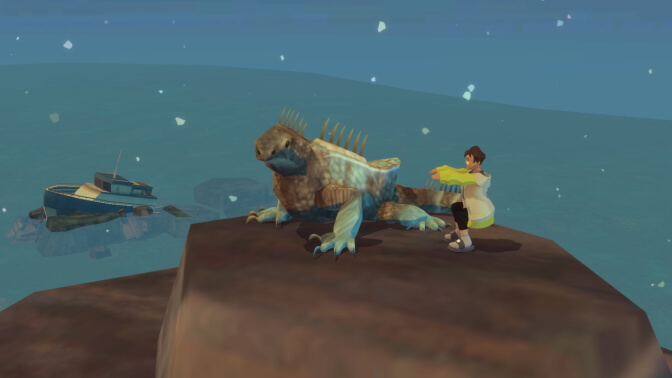
This swag lizard and many more can be found in Sephonie Island.